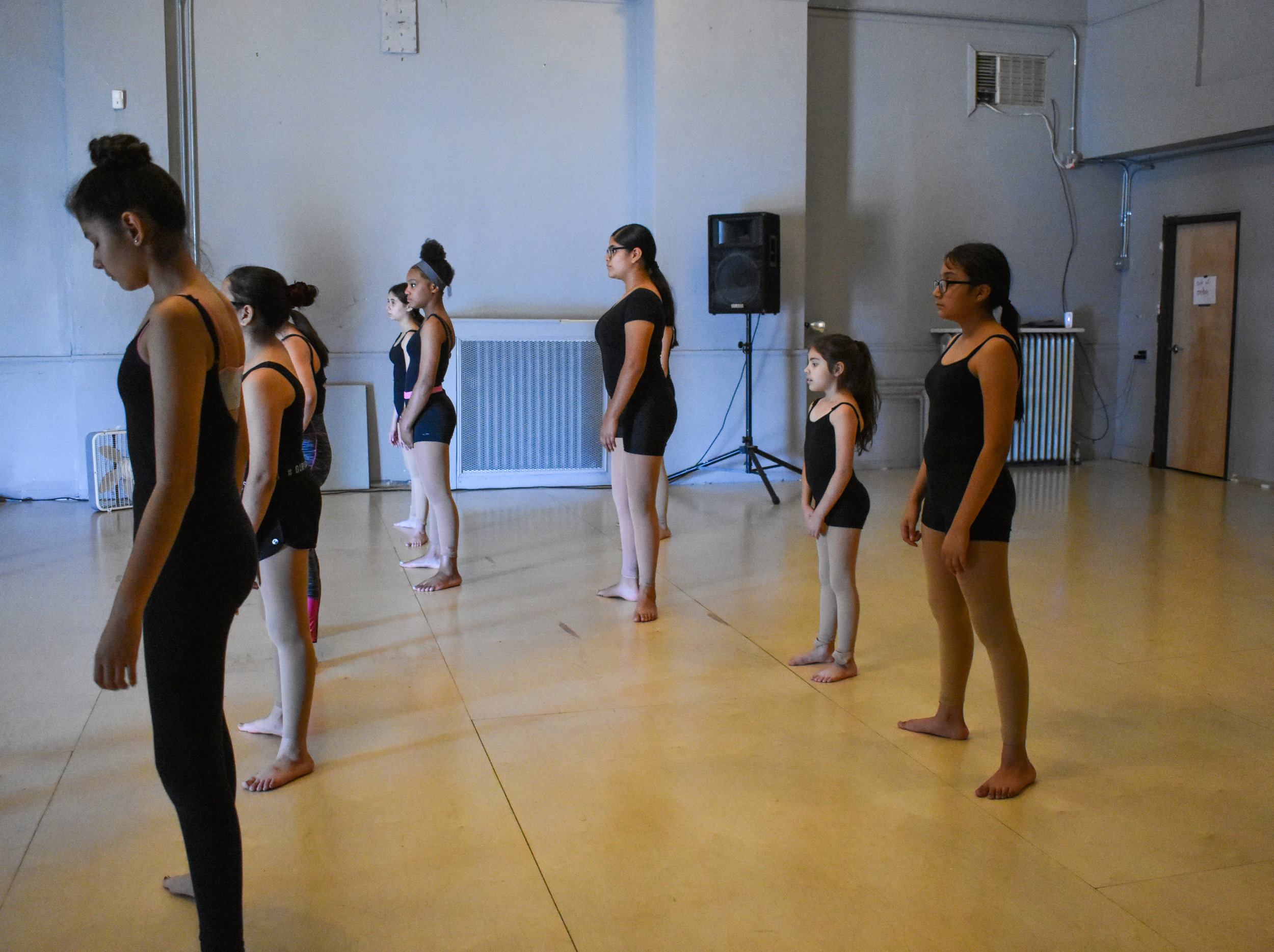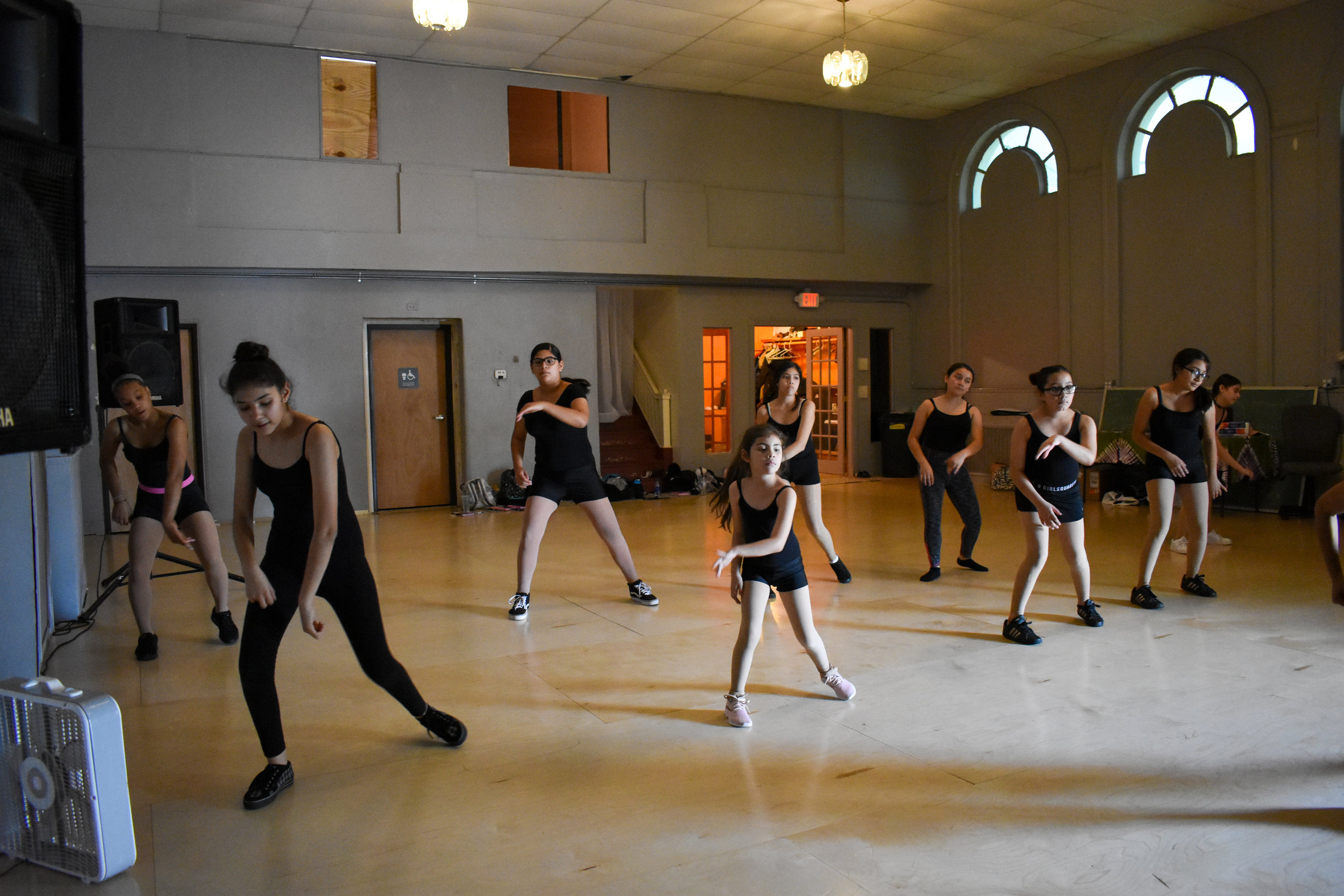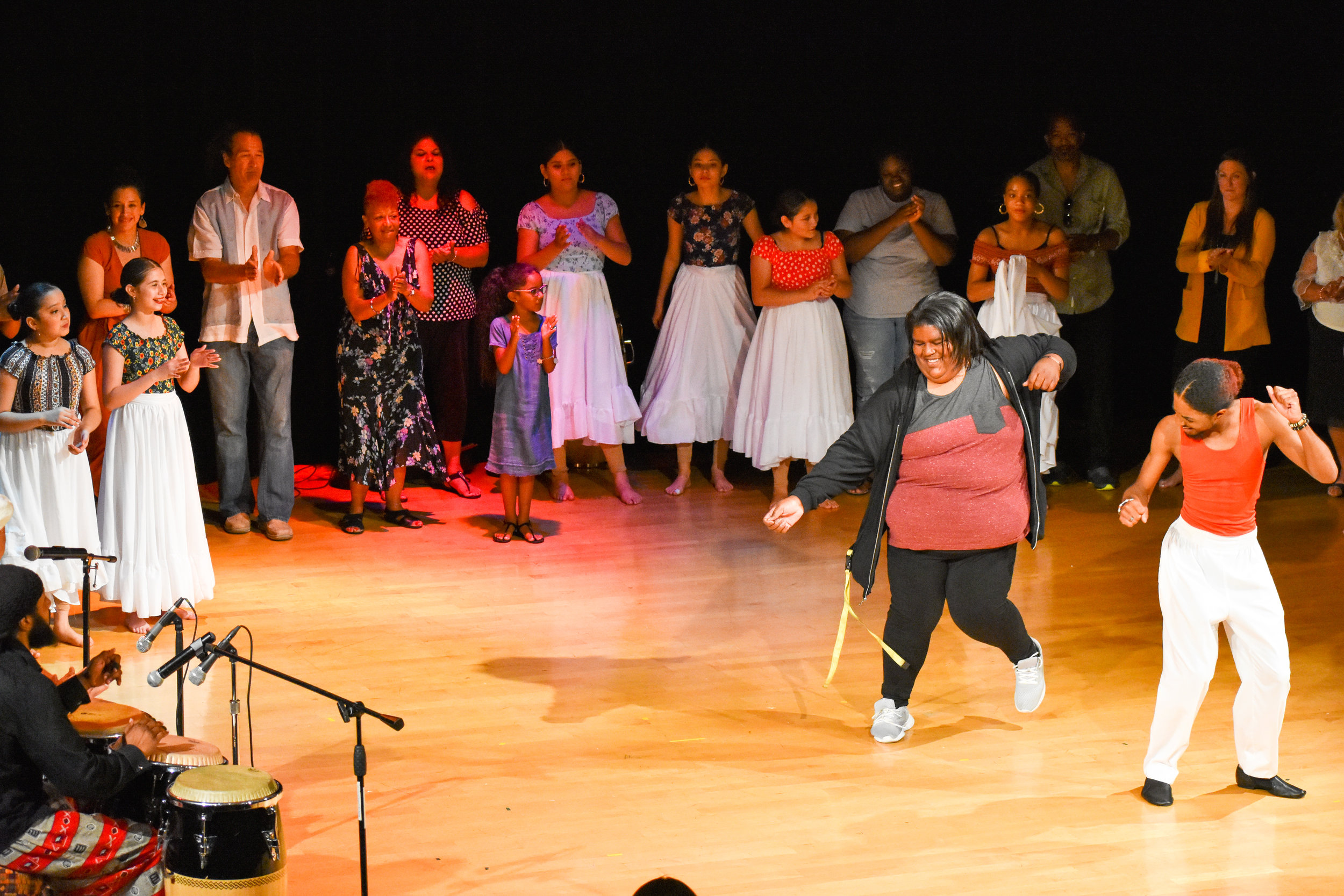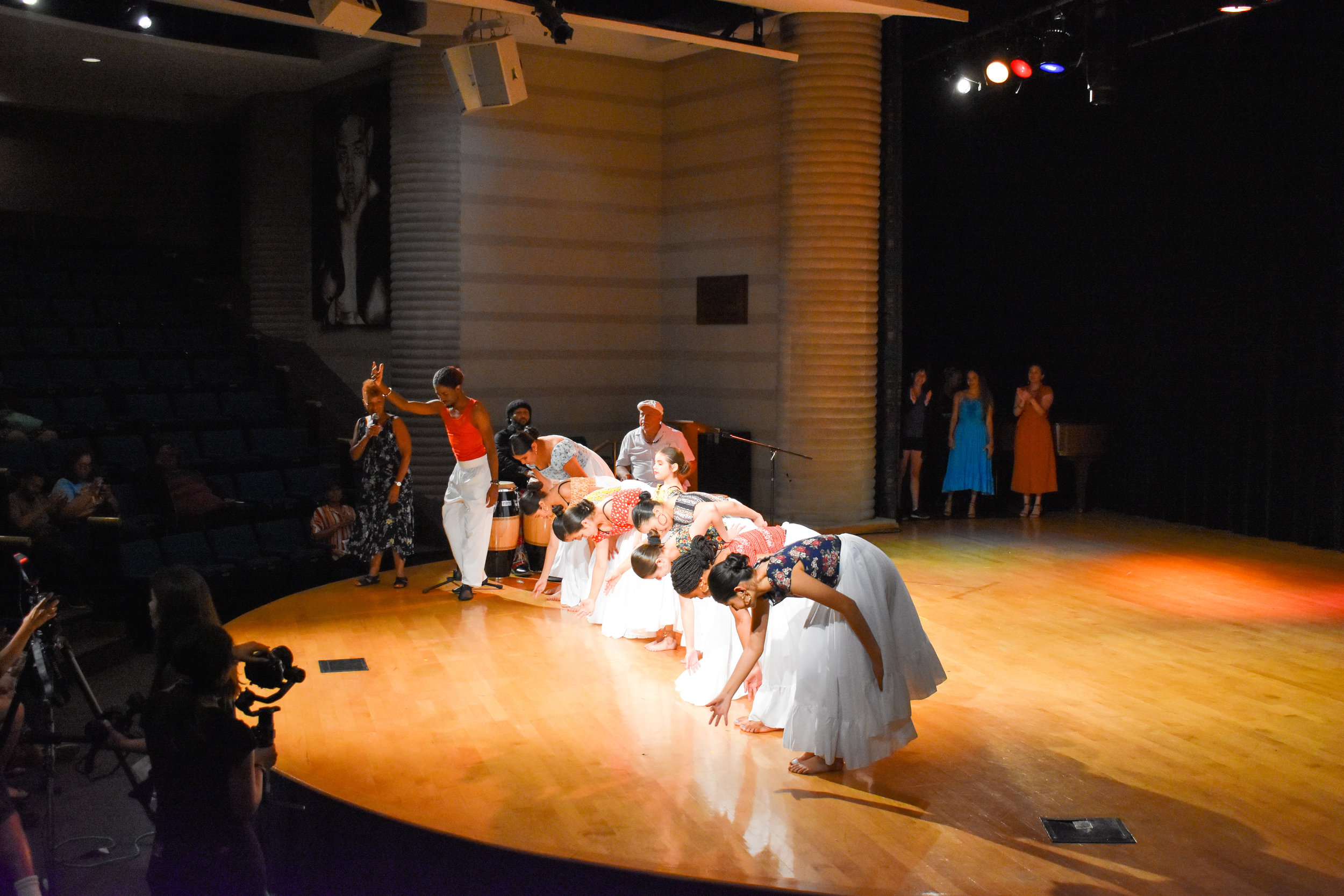Reflections on Sofrito of Cultures
For three weeks, students of Living Arts' Youth Dance Ensemble studied under visionary master teachers Madame Penny Godboldo, Chi Amen Ra and Ozzie Rivera to understand the cultural connection between Black American and Afro Latinx communities (The African Diaspora). As the Living Arts Teaching Artist brought in on this project, I was honored to even be in the room with these incredibly decorated artists that I'd heard about for years. The importance of using dance as the catalyst to discuss these connections is a conversation I've had many times with various students, parents and fellow teachers. In Afrocentric and Indigenous culture dance is often used as an archive. Various movements are used in relation to specific traditions or derived out of cultural experiences. Thus, there's never a separation between the movement and the history of the culture. This is something that the Dunham Technique, the technique used to inform the residency, teaches extraordinarily well.
Because I've worked with this group of students over the past two years, I knew that they would be a very committed group and they would get pushed in ways they never had before. What I didn't fully anticipate was that I would too. Having only taken Dunham as a master class in High School I was far removed from this as a practice. So, months before the residency began I started training with Madame Penny in her weekly classes, and they were no joke. She pushed everyone to their strongest and gave personal attention/corrections along the way. I became quickly taken with this technique. It was the first time I felt my natural way of moving and my training could live in harmony. During the residency, I watched as the youth increasing soaked up every word Madame Penny said and came to the same realization I had only a few months prior. There was nothing like this technique.
Dunham wasn't the only movement style studied. The students got good doses of Step, Hip Hop, Rumba and Bomba as the teachers swapped responsibilities sharing our places of expertise. Each morning after they set intentions for the day, we moved into a lecture on the style they'd be learning in repertoire rehearsal. This time allowed for deep discussion on the connections and histories of the cultures. As each teacher had expertise in separate areas we found ourselves as students of each other as well, taking notes and asking questions. This inter-generational learning space was one of the most important parts of the days. It allowed for us all to continue growing and for the students to see their teachers as students themselves, something no one ever stops being.
The days went on and the youth became increasing confident movers. The shift in their mindset became abundantly clear, in the way they discussed and asked questions of the styles, their self-assurance and even their posture. This heightened as we moved into preparation for the show. There's an indescribable feeling when a performer moves to rehearse in a performance/theater space. After all the work training in class and rehearsal, your body takes over, bumps it up several notches and makes you performance ready. This is exactly what happened to the students. They performed a phenomenal concert of movement from across the African Diaspora, but more importantly learned their connection in that history, grew as artists, and became in tune with their bodies.
I'm still processing this work as these three weeks absolutely shifted the way I understand movement as well as myself. What I am absolutely sure of is; this residency connected me to artists I'd dreamed of working with, gifted me a brilliant mentor in Madame Penny, deepened my personal practice and strengthened my relationship to my students. For that I am forever grateful.










































